As previously reported on this blog, Medical Museion set up a very temporary exhibition at the Bella Center congress center in Copenhagen this weekend. The occasion was the annual meeting of ESA, the Europan Society for Anesthesiology, and the exhibition focussed on the events, outcomes and legacies of a few very dynamic years in anesthesiology in general (and Danish anesthesiology in particular) in the early 1950s.
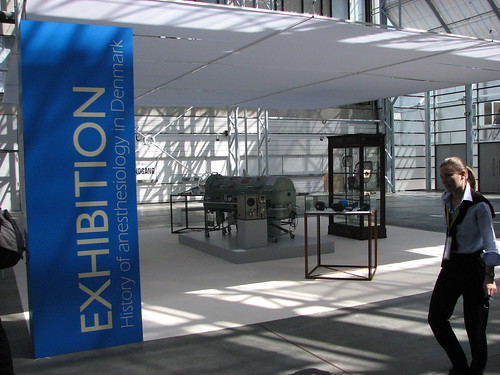
The common thread of the objects displayed and stories told was the Copenhagen polio epidemic of 1952. and the importance of this event for developments in intensive care management and clinical chemistry. While few anesthesiologist today are familiar with this epidemic, they are certainly well acquainted with how positive pressure ventilation has replaced negative pressure ventilators, like the “iron lung” or cuirasses, with the “Astrup” blood-gas measuring equipment marketed by Radiometer, and with the AMBU resuscitation bag invented by Danish anesthesiologist Henning Ruben.
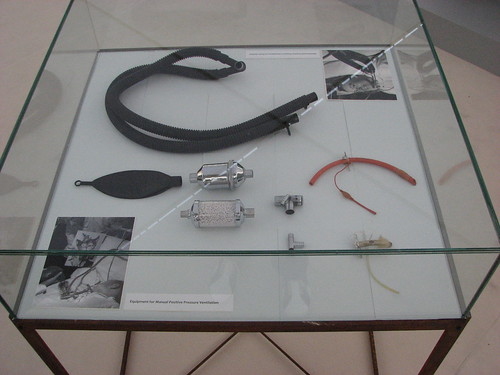

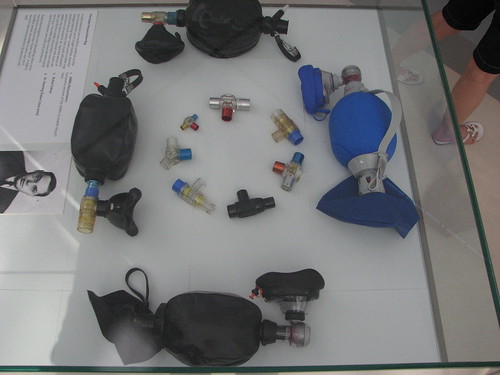
The exhibition was set up Thursday and Friday last week. It was open for the duration of the annual meeting, which started Saturday morning and continued until today. The exhibit was quickly dismantled and the objects returned to storage rooms at the Medical Museion (Bella Center is a busy venue, and exhibitors are required to clear the area within a strict deadline). In all, it has been some very busy days, conducted during a 30C heat wave, and both Nicole and I feel quite tired.
So, what are our experiences from this exhibition? In my opinion, it has been a lot of fun. We were given quite free reins, and were able to draw on the excellent collections of the Medical Museion as well as the expertise of a number of active and retired anesthesiologists. The design phase was a real challenge since we had no experience with Bella Center as an exhibition venue, and many decisions had to be taken “in the dark”. But cooperation with ESA officials and technicians and architects at Bella Center was good, and even though there are a number of things we would have done differently if we were to do it all again, I think we ended up with a very nice exhibition.
What is best about it all, however, is that the exhibition was well received. It is difficult to determine exactly how many people went and saw it, but a conservative estimate is 2000 visitors during the 33 hours we were open.
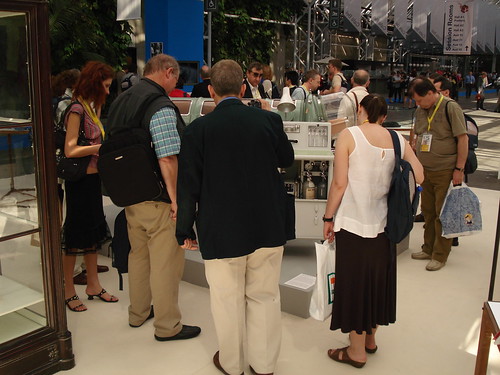
Attention focussed on the 1952 Dräger iron lung, which many had seen pictures of but had never stood next to. It really seemed to draw people to it. Many visitors remembered working with early Radiometer equipment, and there was also a lot of attention around a positive pressure ventilator produced by the internationally well-known Danish audio-video company Bang & Olufsen.
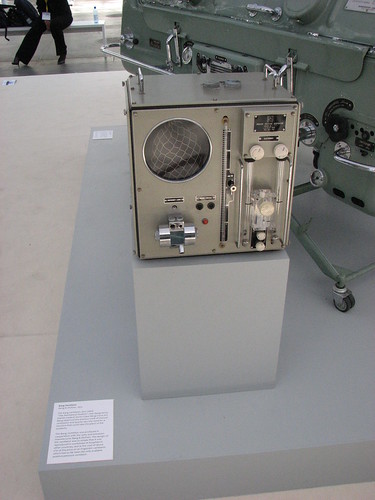
A 24-minute film showing therapeutic procedures employed during the 1952 polio epidemic attracted more viewers than we could have hoped for, and we were also happy to see a lot of people spending time on the three exhibition cases showing AMBU resuscitator bags, manual ventilation equipment, and objects and equipment related to the use of neuromuscular blocking drugs.
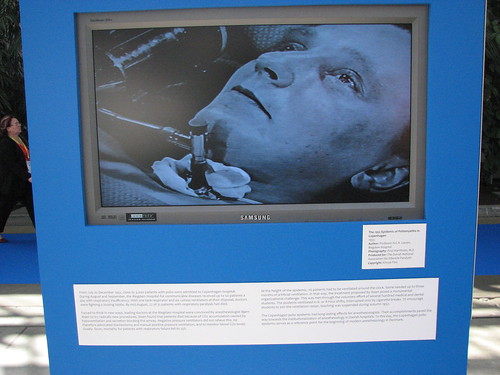
Yet in spite of the large number of visitors, we had surprisingly little interaction with the participants in the congress. Only few people seemed interested in discussing the objects and their context, or in relating personal experiences. Many visitors spent a good deal of time photographing the objects (the iron lung must be quite high on the list of the most photographed objects in Denmark this weekend!), discussing particular objects with colleagues, or simply walking around the exhibition in a meditative way. Some probably took take a break from the quite intense atmosphere of the industry exhibition and the scientific sessions, and enjoyed taking things at their own pace.
Should we continue to do exhibitions like these? Perhaps it is a little early to decide on this, with the adrenaline still just going down. Certainly, our permanent exhibitions did not have more visitors because of the show we put on at Bella Center (but then again, the weather was not ideal for museum visits). Exhibitions like these are not likely to generate a revenue for the museum, even though we have probably not lost money on it either. And it is certainly a lot of work to put into something that lasts for three days!
But I think there are obvious potentials also. We have formed good connections with a couple of Danish medico-technological companies, something that we will probably be able to benefit from in the future, especially with concern to collecting activities. And we would certainly be able to make the Medical Museion and the University of Copenhagen much more visible to participants in international congresses. But most importantly, I think it is great to bring history to where people are rather than always demanding that they come to us. I am sure that a lot of visitors gained a new and wider perspective on their work, and I guess that is a really important task for a museum.
Euroanesthesia 2008: Impressions from a satellite exhibition on the history of anesthesia in Denmark
As previously reported on this blog, Medical Museion set up a very temporary exhibition at the Bella Center congress center in Copenhagen this weekend. The occasion was the annual meeting of ESA, the Europan Society for Anesthesiology, and the exhibition focussed on the events, outcomes and legacies of a few very dynamic years in anesthesiology in […]


